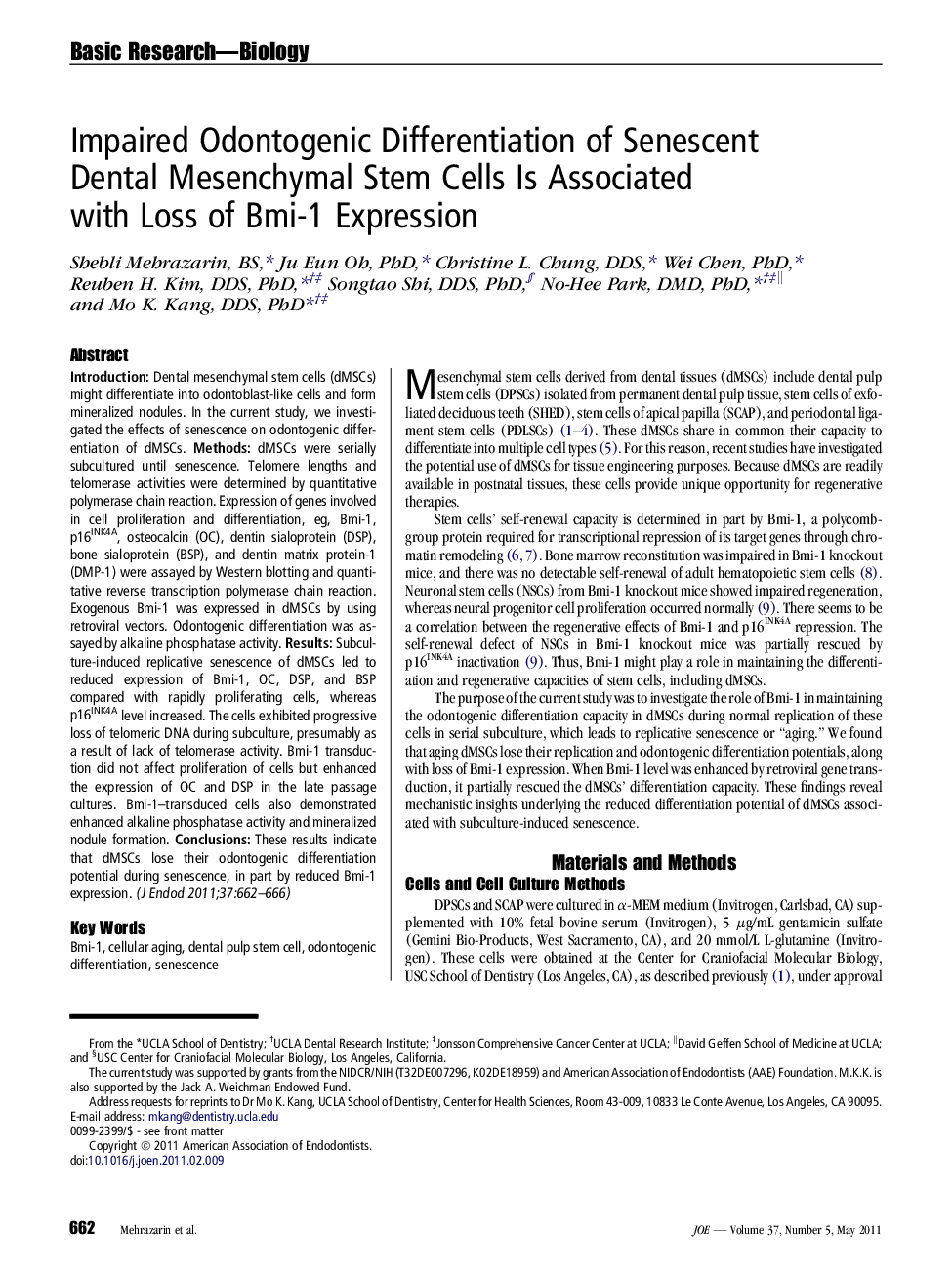| Article ID | Journal | Published Year | Pages | File Type |
|---|---|---|---|---|
| 3150521 | Journal of Endodontics | 2011 | 5 Pages |
IntroductionDental mesenchymal stem cells (dMSCs) might differentiate into odontoblast-like cells and form mineralized nodules. In the current study, we investigated the effects of senescence on odontogenic differentiation of dMSCs.MethodsdMSCs were serially subcultured until senescence. Telomere lengths and telomerase activities were determined by quantitative polymerase chain reaction. Expression of genes involved in cell proliferation and differentiation, eg, Bmi-1, p16INK4A, osteocalcin (OC), dentin sialoprotein (DSP), bone sialoprotein (BSP), and dentin matrix protein-1 (DMP-1) were assayed by Western blotting and quantitative reverse transcription polymerase chain reaction. Exogenous Bmi-1 was expressed in dMSCs by using retroviral vectors. Odontogenic differentiation was assayed by alkaline phosphatase activity.ResultsSubculture-induced replicative senescence of dMSCs led to reduced expression of Bmi-1, OC, DSP, and BSP compared with rapidly proliferating cells, whereas p16INK4A level increased. The cells exhibited progressive loss of telomeric DNA during subculture, presumably as a result of lack of telomerase activity. Bmi-1 transduction did not affect proliferation of cells but enhanced the expression of OC and DSP in the late passage cultures. Bmi-1–transduced cells also demonstrated enhanced alkaline phosphatase activity and mineralized nodule formation.ConclusionsThese results indicate that dMSCs lose their odontogenic differentiation potential during senescence, in part by reduced Bmi-1 expression.
